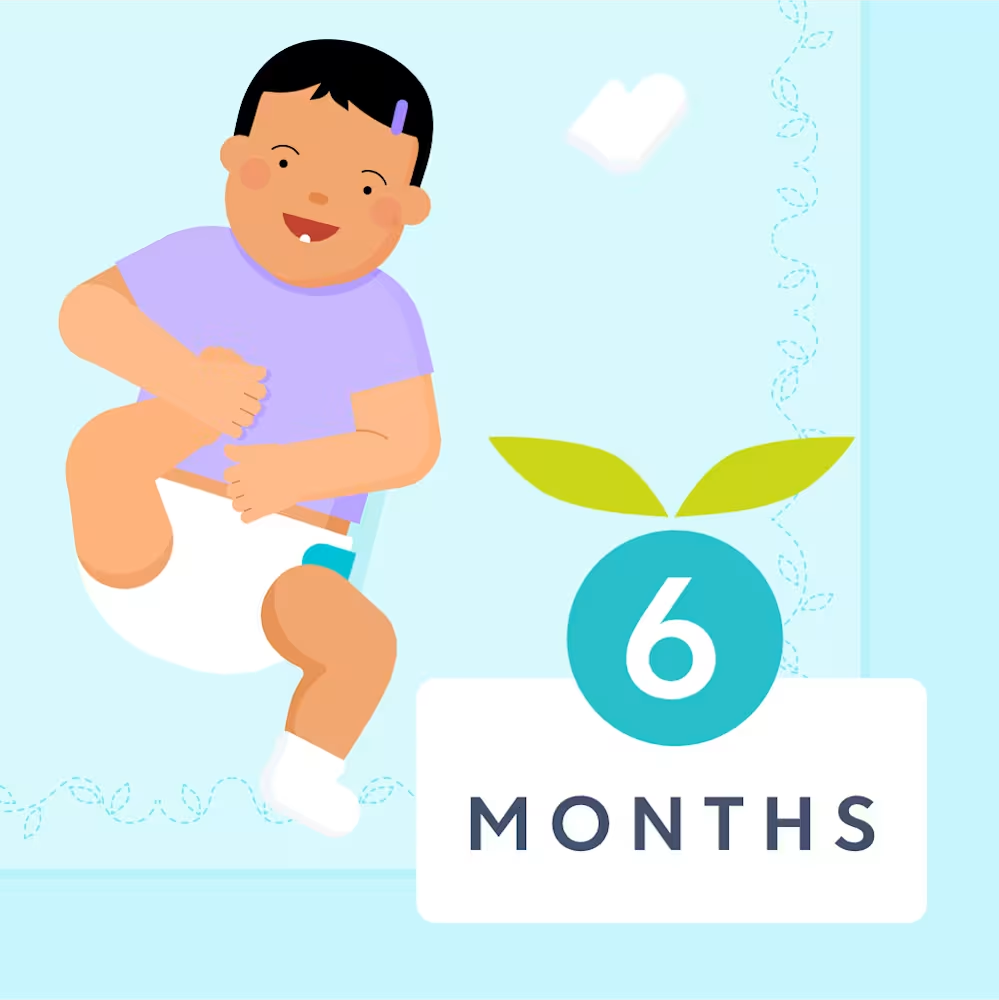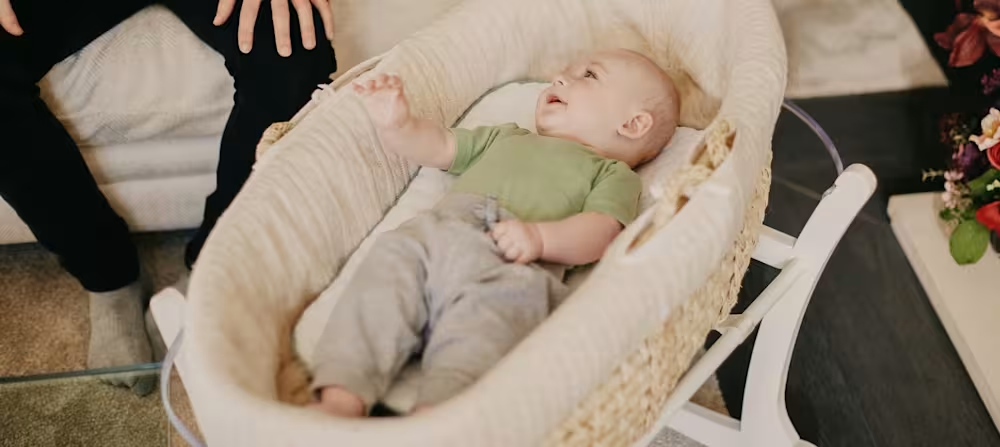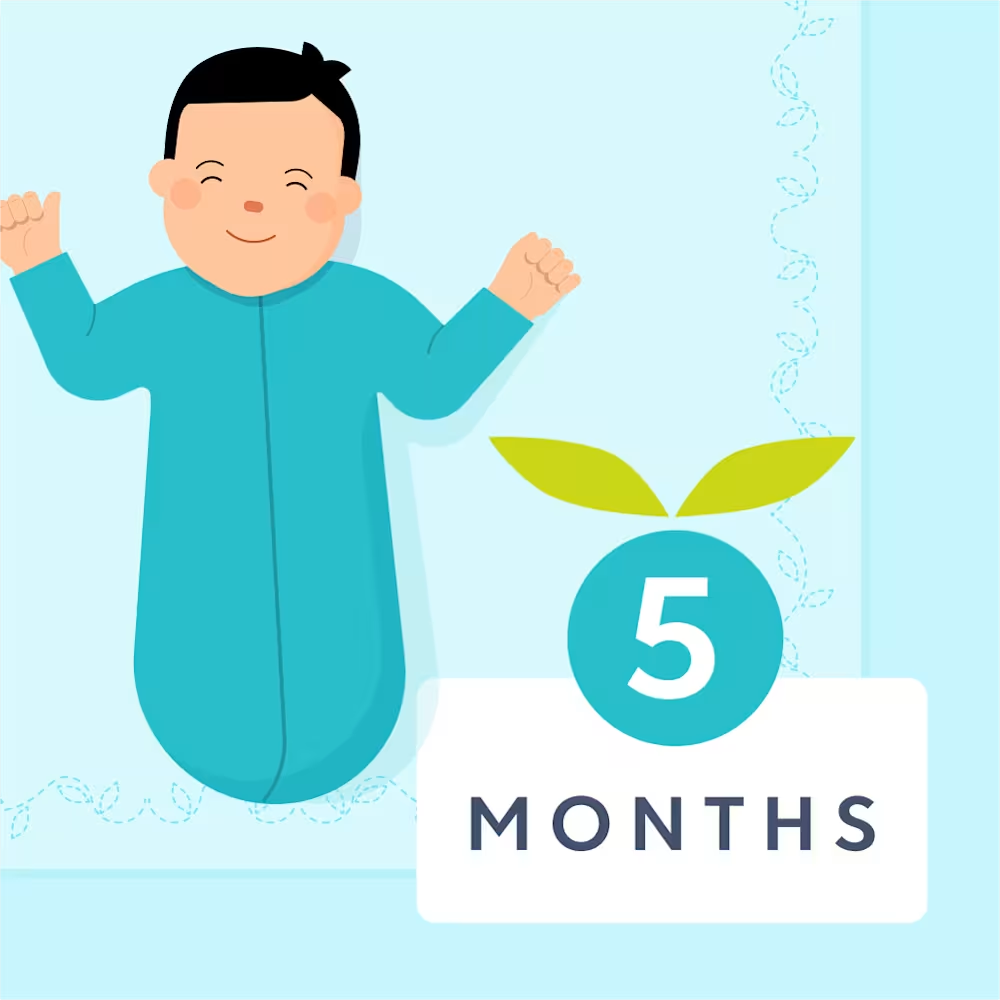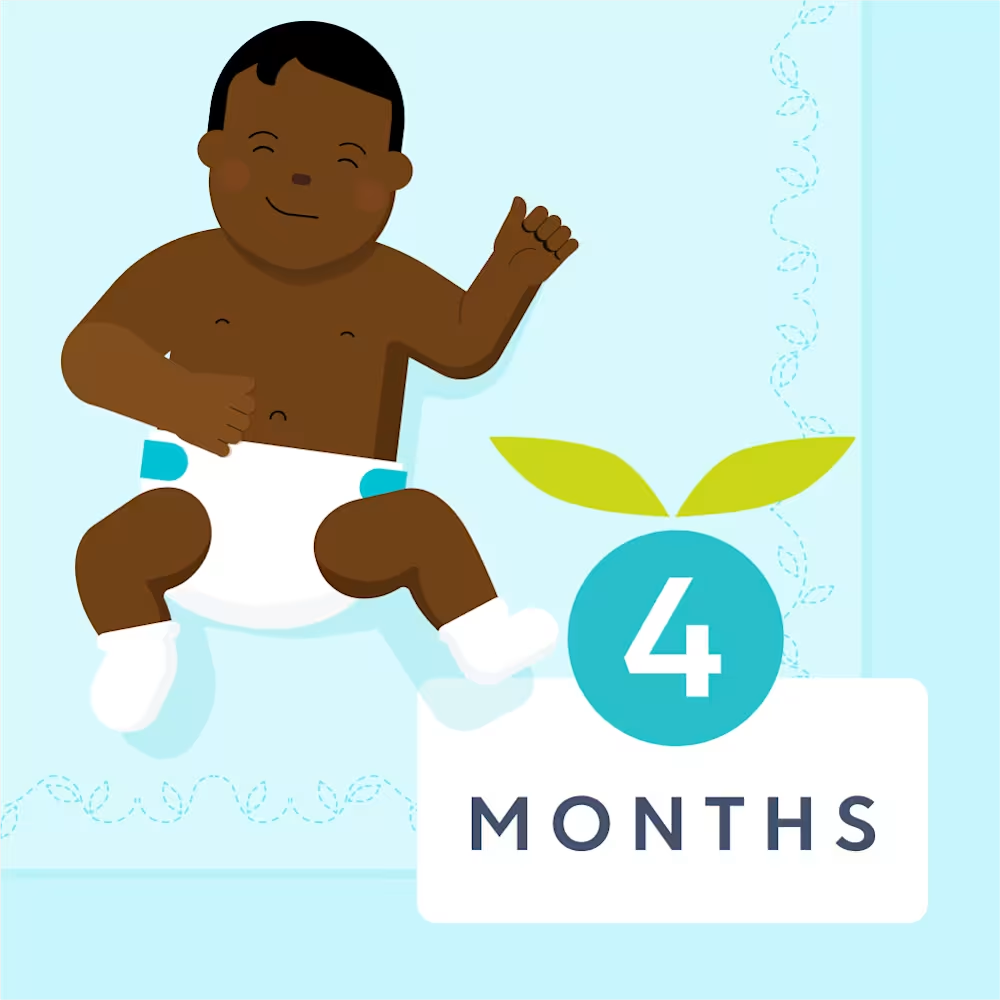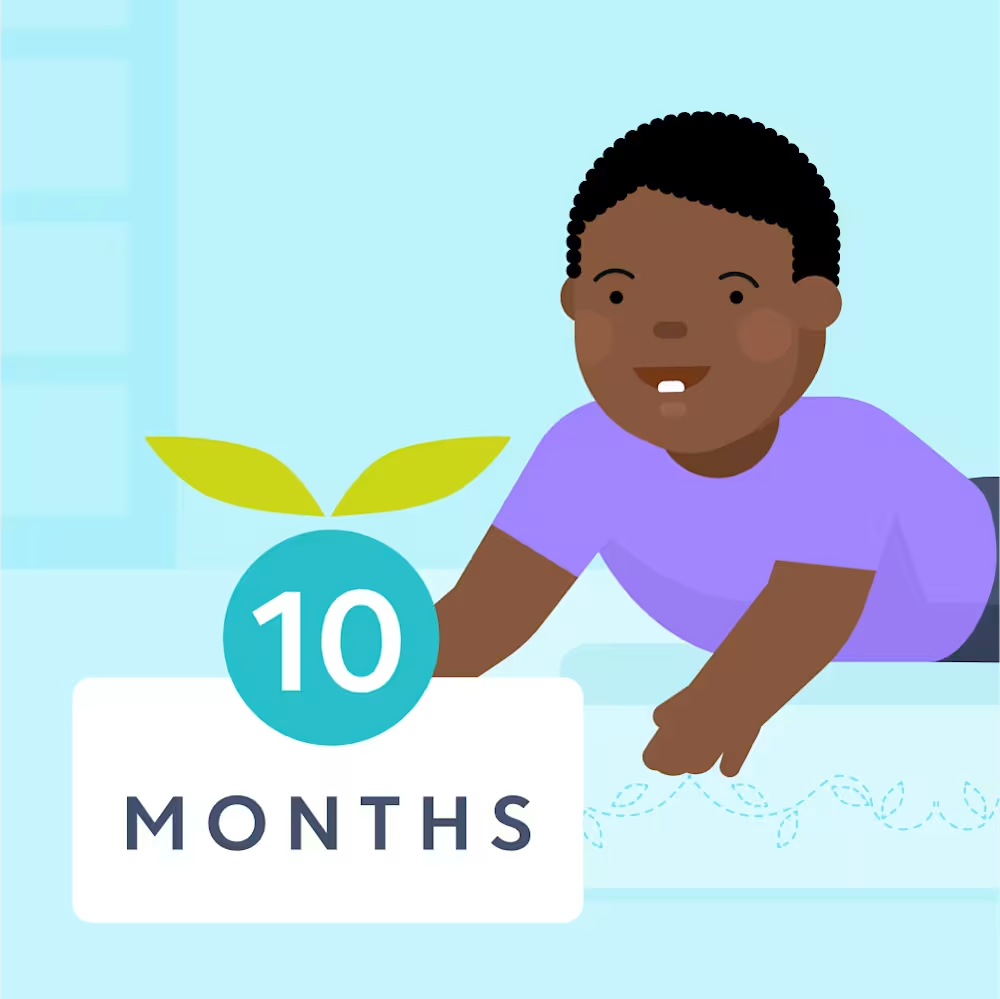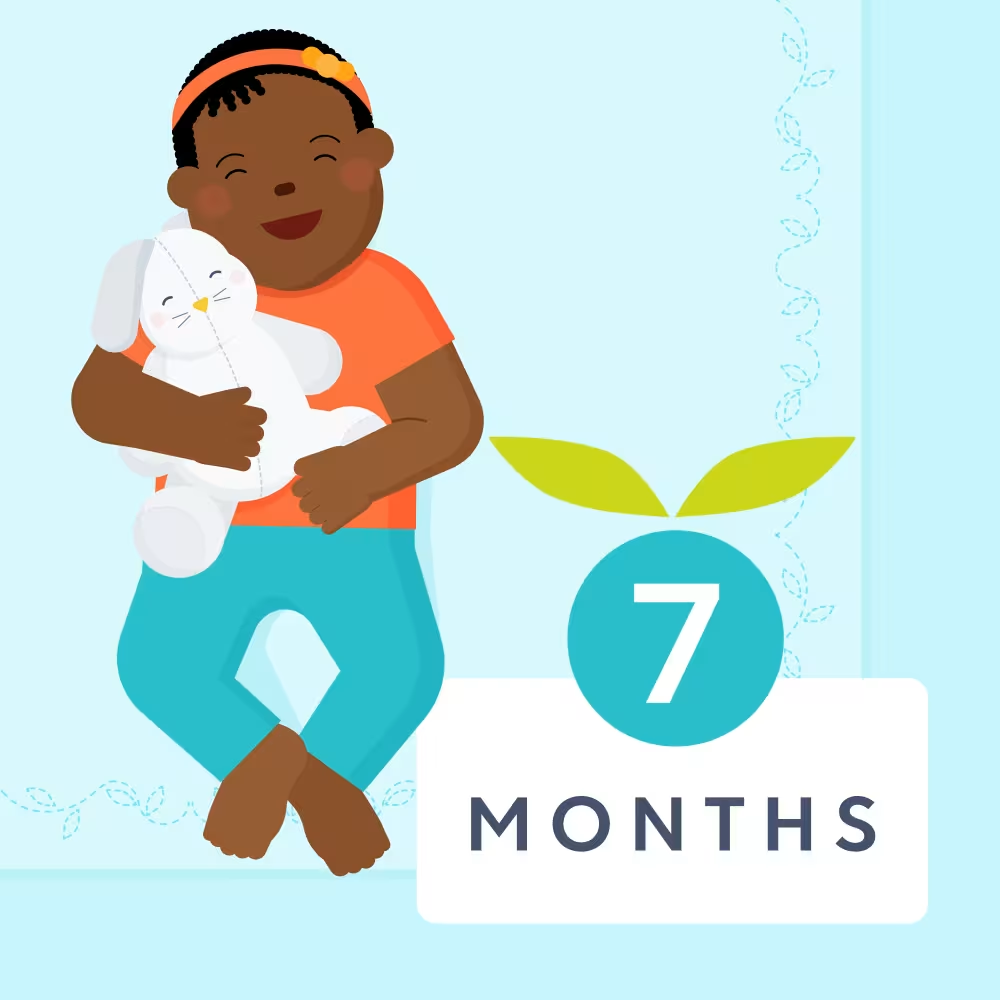Sleep training for 6 month olds and older babies: How to, methods and tips
Updated Dec 02, 2025

It’s true. Parents are required to make an enormous amount of choices on behalf of their children. Even something as seemingly simple as how a child falls asleep involves a wide variety of options and opinions. in particular often stirs up different views among parents.
When it comes to sleep training, we don't take sides. It's up to you if it's the right fit for you and your family! We won't be making that call for you, but we can give you the information you need to make the best decision for your baby's sleep. Read more for sleep training tips for 6, 7, 8, 9, 10, and 11 month old babies.
Table of Contents
Can you sleep train 6 month olds and older babies?
Yes, most babies are developmentally ready for sleep training at 6 months and older. After 4 months of age, the American Academy of Pediatrics [] (AAP) recommends putting your baby in their sleep space when they are drowsy, but not already asleep. And for good reason: Once children learn to fall asleep independently they tend to fall asleep easier and have fewer night wakings []. This generally means that there are fewer disruptions to sleep and more rest for the entire family.
However, “drowsy but awake” isn’t always straightforward. Many infants are used to being rocked, held, or fed to help them drift off to sleep. Making the switch to a routine where they are left to sleep on their own can be tricky, especially if a strong sleep association has been formed. Depending on their personality, they may struggle with the new routine, causing stress for both the baby and their caregiver.
Not sure what to do? Sleep training methods can provide a framework for how to help your baby learn this new skill of falling asleep on their own. Some techniques are more gradual than others and are designed to limit tears as much as possible. Other strategies prioritize speed and may allow for more crying.
It's ultimately up to you to decide if sleep training is right for your family. If you decide to move forward with sleep training, you can find a method that works well for you and your baby which will guide you through the process. On the other hand, some families might find that they already have adequate sleep or that sleep training is not a good fit for them, and that's okay too!
Sleep training methods for babies between 6 to 11 months
| Sleep training method | Does it work for babies 6 months and older? |
|---|---|
| Gentle methods | Yes, however, these methods take longer. |
| Chair method | Yes, this method can help parents transition out of the room as their baby falls asleep. |
| Ferber method or gradual extinction | Yes, these methods are faster but typically involve more crying in the short term. |
| Cry it out or total extinction | Yes, this method can be a good fit for babies who get more upset with frequent check-ins. However, we recommend a video monitor and hourly safety checks. |
While , here’s the basic idea behind each of these popular sleep training strategies:
Gentle methods
Gentle sleep training methods focus on gradually weaning the baby from needing help to fall asleep. These include techniques like “fading” and “pick up put down,” where you actively attempt to calm your baby down as they learn a new way of falling asleep. This approach is preferred by parents who want to try to keep tears to a minimum and don't mind the process taking longer.
For example, say your baby typically falls asleep while feeding. The process begins by introducing rocking instead of feeding, then reducing movement and eventually putting your baby in the crib while awake. You’d stay close by for support. Eventually, you work on removing your touch, and eventually your presence, as a sleep association.
Chair method
The chair method is another gradual approach to sleep training. You sit in a chair next to the child's crib while they learn to fall asleep independently. Over time, the chair is moved further away from the crib and closer to the door so that you’re staying in the room with the child — but not necessarily in contact with them.
The goal of this sleep training method is to stay in the room with your baby until they fall asleep until eventually, your presence is no longer necessary for them to drift off. This method is often used as a follow-up to the fading method. It's considered a gentle way to get to the point where you can leave the room before your little one is fully asleep.
Ferber method
The popular is a “graduated extinction” technique. This strategy involves gradually increasing the length of time between visits, starting from 3 minutes on the first night, and getting longer from there. Other variations may use a static interval of 10 - 15 minutes, and parents may pick up their baby or stay in the room to calm them. This method is preferred by parents who want faster results and are comfortable with allowing their baby to cry for defined periods.
The Ferber method is viewed by some as a variation of "cry-it-out" (CIO) since it involves leaving the baby in their sleep space and allowing them to cry for certain periods of time. However, unlike total extinction “cry-it-out,” the parent will typically come back at regular intervals to attempt to soothe the baby before leaving again.
Cry it out
is a total extinction method of sleep training that involves leaving a baby to fall asleep on their own, without any interventions to soothe them. In other words, you put your baby down in their crib awake after their bedtime routine and leave the room so they fall asleep on their own. This method is often chosen by parents who want a fast solution, but find that check-ins for calming are actually more upsetting to the baby than leaving them alone.
Some babies may fall asleep within 10 minutes with this method, others may cry for long periods. While this goes for all sleep training strategies, it’s especially important to make sure that your baby's needs are met before beginning this method (ie. they are fed, dry, not in physical discomfort), and developmentally able to fall asleep without help. We recommend using a video monitor and hourly safety check-ins to ensure your baby remains safe.
How many nights does it take to sleep train 6+ months old babies?
It may take a few days or a few weeks. How long it takes before you see improvement is largely dependent upon the chosen method and your child's temperament. Generally, progress is seen after 3 to 4 nights when using gradual or total extinction techniques. However, gentle methods tend to take longer. When trying any sleep training technique, it's important to remember that consistency is essential.
Gaining the ability to drift off to sleep alone is similar to mastering any other new skill; it is normal to experience a few bumps in the road before any progress is made. If the initial attempt is not successful, don't be disheartened — try switching to another technique or combining approaches until the right one is found. The main objective is to ensure your child has enough opportunities to practice and master the art of falling asleep independently.
Sleep training tips for 6 month olds and older babies
Tip | Why it helps | What to try |
|---|---|---|
Set the stage with a consistent routine | Predictable routines cue your baby’s body and brain that it’s time for sleep. | Create a simple sequence — bath, feeding, story, song, bed. Keep it consistent so bedtime feels calm and familiar. |
Follow an age-appropriate schedule | Right-time sleep prevents overtiredness and helps babies fall asleep faster. | Watch for sleepy cues and balance wake windows. can help you find the ideal bedtime. |
Break sleep training into stages | Tackling everything at once can overwhelm babies (and you). | Start with bedtime only. Once nights improve, move on to naps. Gradual progress leads to better consistency. |
Stick with it | Consistency reinforces new sleep habits over time. | Expect occasional setbacks (like if your little one gets sick or due to travel). Return to your usual routine to help your baby get back on track. |
Find more details below:
Tip #1: Set the stage for sleep with a consistent routine
If you haven't done it already, we highly suggest putting a in place for your tiny human. Bedtime routines are like a sleep-time secret handshake to kids, letting them know that it's time to end their day and drift off to dreamland. When done consistently, these routines can help your baby get better sleep and make your family function more smoothly. It’s worth the investment!
Tip #2 Follow an age-appropriate schedule
Babies who are overtired tend to cry a lot more at bedtime and sleep less soundly. On the flip side, "under-tired" babies may have a hard time nodding off because they don't quite have enough sleep pressure. That's why it's important to find the to put your little one to bed; it can make sleep training a whole lot easier.
Tip #3: Break sleep training into stages
If your baby has been having sleep issues at night and during the day, we know it's tempting to work on every sleep period, all at once. But that can backfire by being overwhelming and causing a lot of overtiredness (cue the additional crying and resulting night wakings). Kinda like drinking water from a firehose! Instead, try breaking it down into smaller steps.
Start with bedtime only. Nailing bedtime usually cuts down on night waking without directly tackling them. Once you've achieved success at night, you can move on to naps. It might take more time, but it's worth it in the long run if it keeps the process more manageable, as that usually leads to more consistency!
Tip #4: Stick with it
Teaching healthy sleep habits is like a long-term commitment. Once your little one has learned how to put themselves to sleep, you'll need to consistently make sure they keep it up in order to maintain their sleep patterns. It's totally understandable if you find yourself rocking or feeding your baby to sleep when they're feeling under the weather or when you're on vacation. Just keep in mind that your baby's sleep might take a few steps back as a result.
Can you sleep train babies aged 6+ months for naps?
Yes! Many babies have a harder time making changes to their routine during the day, and you can tackle one nap at a time or go all in with all the naps. If you're using a gradual approach, start with the first nap of the day. For babies taking three naps, we usually suggest sleep training for the first two only, since the last one can be difficult and result in a lot of frustration without any sleep.
As you work on sleep training during the day, give it an hour. If your little one still hasn't dozed off, take a break for 30 - 60 minutes. Don't forget to do the nap routine again to signal that it's time to snooze. If your baby still won't nap after the second try, just skip it for the day and move on. You'll probably need to move bedtime up a bit if naps are shorter or skipped.
How to sleep train 6+ months old twins?
Separating twins for 3 - 4 nights can help them make faster progress with sleep training and reduce the chances of their cries waking each other up. For two-parent households, each parent can take on an "assigned" twin at bedtime and during the night. An alternative is to work on one twin's sleep at a time, starting with the "easier" one, and possibly separating them for a week or so.
What to do if sleep training your 6 to 11 month old baby is not working
First, you'll need to make sure that your baby is consistently falling asleep independently each night before deciding if the technique is working or not.
Next, if you get stuck in the process, it can be helpful to put your baby in their bed a bit more awake. That way, they won't associate their parent's help with falling asleep. This is especially useful if your little one wakes up often in the middle of the night, even though they start off the night without any help falling asleep.
If you're still having trouble with your baby's sleep, consider expert help. You should reach out to your pediatrician to rule out any medical issues that could be causing sleep troubles. Once that check-up is complete, you have the option to get a customized sleep plan through .
Takeaway: Sleep training babies 6 month old and older
Right timing: By 6 months, many babies can start learning to fall asleep independently.
Proven approach: Research shows that sleep training can improve rest for both babies and caregivers.
No one-size-fits-all: The best method depends on your baby’s temperament, sleep patterns, and your family’s comfort level.
Stay consistent: With patience and predictability, your baby will build healthy sleep habits that last.
Sleep training babies aged 6+ months FAQ
If you're curious about what lies ahead with sleep training, glimpse into the future to see what you might experience when it comes to . Also look back on .
Share article:
Note: The content on this site is for informational purposes only and should not replace medical advice from your doctor, pediatrician, or medical professional. If you have questions or concerns, you should contact a medical professional.
2 Sources
Table of Contents
Share article:
